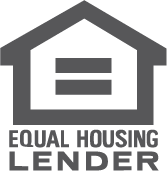In-home care versus long-term care facilities

In the coming years, America will experience unprecedented growth in our senior population, and with it dramatically increased demand for senior care services. Today, America’s senior population is growing faster than the national birth rate average, with 54 million people over age 65(everyday 10,000 turn 65 based most recent data of 2019). This number is expected to double over the next decade. It is estimated that almost a quarter of the population (78 million people) will be considered a “senior” in just ten years.
This trend will call for change and innovation in the way we care for our older loved ones.
Trends in Elderly Care
Throughout the second half of the 20th century, there was a dramatic rise in the construction of long-term care facilities in America. Nursing homes were the predominant option for seniors requiring care in their later years.
These homes provide around-the-clock care by trained individuals, and while they don’t offer all of the comforts of home, they quickly became the American social norm. This isn’t the case worldwide, however. In many cultures, it is much more commonplace for aging relatives to be cared for at home, with long-term care facilities only considered in exceptional circumstances.
Increasingly in US too, mindsets are shifting around latter-life care alternatives.
FREE CONSULTATION

Why are more people looking for In-Home Care?
While long-term care facilities were once the most popular care method for older Americans, there is a shift in this trend. In-home care offers a wide variety of benefits over long-term care alternatives.
In-home care allows for a higher quality of care
The COVID crisis has brought to light the inconsistency in quality of care offered in American long-term care facilities. Ensuring high quality of care is much easier when it is done at home. Caring for an aging relative in-home allows for peace of mind that your loved one is being looked after properly and all of their needs are being met.
Long-term care is expensive
While in-home care for the elderly can have high costs associated with it, the cost of long-term care facilities can be very expensive too. Depending upon the type of accommodation and intensity of care, monthly rates can run in the thousands to tens of thousands. Often there are added expenses for meals, laundry, and personal care as well.
There is a lack of supply of long-term care facilities
While there are many long-term care facilities throughout the country, there aren’t nearly enough to meet the rising demand for our growing senior population. Waitlists for nursing and retirement homes are long, meaning that seniors may spend years waiting to get the accommodations that they want. In many cases, people may have to sacrifice location or room type to get into a home, especially if the situation is urgent.
Many cultures reject long-term care for seniors
In the Western world, it is culturally acceptable to for elder relatives to be moved to nursing homes; however, this concept is shunned in many other countries across the globe, with in-home care being the social standard. In US, there are over 1.18 million new immigrants to the country each year, many of whom believe that care should be provided in the home. This has dramatically increased the demand for home-care practices.
In-home care provides consistent routine and familiarity
A change in environment or routine can be challenging and stressful. While many long-term care facilities strive to keep things familiar, nothing can take the place of being at home. Schedules can be personalized and adapted to meet individual needs, and care can be catered to one specific person instead of trying to meet the needs of numerous people at once.
In-home care provides for peace of mind
Caring for your loved ones at home allows for the peace of mind that they are close by and receiving the quality of care they deserve. In-home care will enable you to spend quality time with your aging loved one, while knowing that they are safe and well taken care of.
How can in-home care expenses be paid for?
There is no denying that no matter which option is chosen for elderly care, it can be awfully expensive. With in-home care, modifications may need to be made to the home to make it more accessible. Ramps, stairlifts, or other devices may need to be installed. Nursing or in-home care services can be costly and become even more expensive depending upon the level of care that your loved one requires. Other costs to consider include home safety monitoring in case of an emergency, meal delivery services, and transportation costs.
Reverse mortgages could offer a well-tailored solution for homeowners who require care but wish to remain in the home they love.
Reverse mortgages are available to 55+ Americans (age depends on products), typically enabling them to access up to 55% of the value of their homes. Reverse mortgage customers continue to own and live in their homes, and reverse mortgages require no regular payments.
With the rising home-value environment in recent years, many senior homeowners could have substantially more resources available to them than they realize. Equity in the home can be a great solution to fund costly later life expenses like in-home care.
Could a reverse mortgage be the right solution for you or your loved one to fund in-home care? Click here and I will be delighted to help you determine whether this option could work for you.
FREE CONSULTATION


